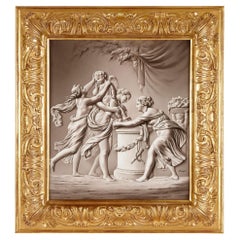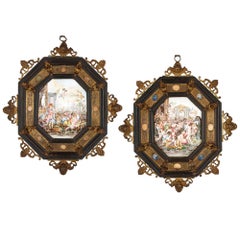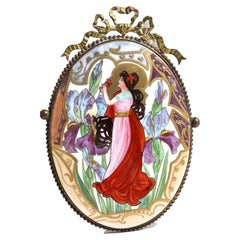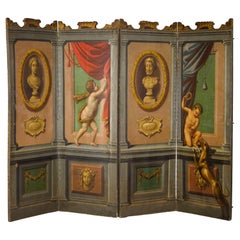Classical Roman Paintings
During Mount Vesuvius’ eruption in 79 A.D., Pompeii and Herculaneum in today’s Italy were preserved as they were on the day of their destruction. Particularly at Herculaneum, furnishings were carbonized beneath volcanic ash. This was pivotal to understanding how Classical Roman furniture was designed. Archaeological investigations and printed reproductions of discoveries would influence styles evoking this ancient civilization, from the Renaissance to neoclassicism.
While knowledge of Classical Roman furniture comes from rare surviving pieces, it is also derived from frescoes and sculptures portraying Roman life. Much of Roman art, architecture and design was informed by Greece — Roman architect, military engineer and writer Marcus Vitruvius Pollio, whose timeless De architectura is taught in contemporary architecture classes and pays tribute to classical architecture, visited Greece while working under Julius Caesar and admired the country’s architectural developments. The Roman solium references the Greek thronos, a stately chair of honor with an upright form and footstool. As the Roman Empire spread across Europe and into North Africa and Western Asia, the expansion of trade for silver, silk, marble and wood allowed for more luxurious designs.
Classical Roman furniture was made from bronze, wood and stone — in particular, marble — with ornate touches like tortoiseshell veneers, bone and glass inlays and claw feet. Ornaments depicting lion heads and mythological figures were sculpted from silver, bronze and ivory. Compared to the decorative attention given to the mosaic floors and wall paintings, however, furniture for even a wealthy house was minimal. It focused on the necessities for guests arriving for both socializing and business and the rooms housing family, relatives and enslaved people.
The triclinium dining room had banquet couches, items so prized they were sometimes interred with the deceased. Tall bronze or terracotta candelabras held oil lamps for lighting. Carved marble tables reflected status, while the lararium home shrine demonstrated faith.
Find a collection of Classical Roman decorative objects, tables, seating and other furniture on 1stDibs.
19th Century German Antique Classical Roman Paintings
Porcelain, Giltwood
19th Century Italian Antique Classical Roman Paintings
Lapis Lazuli, Bronze, Ormolu
Early 1900s Antique Classical Roman Paintings
Porcelain
Late 18th Century Italian Antique Classical Roman Paintings
Canvas
19th Century German Antique Classical Roman Paintings
Porcelain, Giltwood
1920s French Vintage Classical Roman Paintings
Canvas, Paint
1830s French Antique Classical Roman Paintings
Canvas, Paint
Late 20th Century Portuguese Classical Roman Paintings
Porcelain
Early 20th Century German Classical Roman Paintings
Porcelain
16th Century American Antique Classical Roman Paintings
Wood
20th Century American Classical Roman Paintings
Canvas
19th Century Italian Antique Classical Roman Paintings
Paper
20th Century Classical Roman Paintings
Porcelain
Mid-20th Century Italian Classical Roman Paintings
Wood, Masonite, Paint



